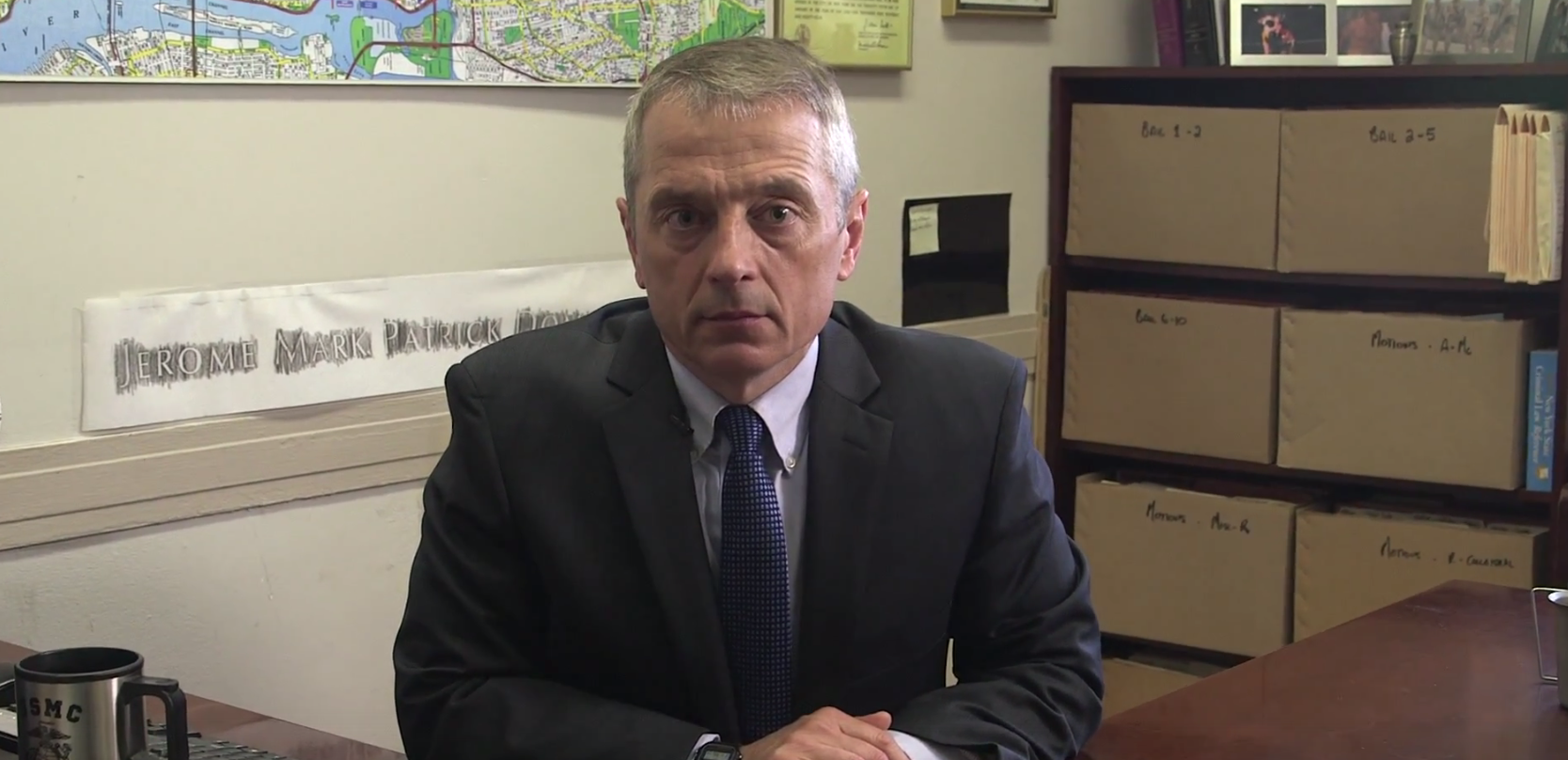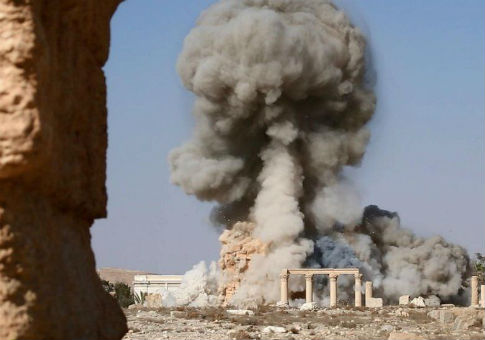When Matthew Bogdanos began investigating the looting of artifacts from Iraq’s National Museum in 2003, his team often found caches of weapons mixed in among the stolen antiquities.
In time, he discovered the missing link. Al Qaeda had been profiting from the sale of relics pillaged from the museum.
"We would be searching for terrorists, and later we found antiquities," Bogdanos says. "Ultimately both of those trades had been rolled into one."
"That should have surprised nobody."
Unlike in other Middle Eastern or African countries, terrorist groups in Iraq do not have access to diamonds, opium, or other cash crops to fund attacks. But modern-day Iraq was once home to the ancient empires of Mesopotamia between the Tigris and Euphrates Rivers, leaving behind a wealth of artifacts to be uncovered—and purloined.
Bogdanos, now an assistant district attorney in Manhattan and a colonel in the U.S. Marine Corps Reserves, has presented his findings about the link between terrorist financing and the illicit antiquities trade to several international bodies, including the British parliament, UNESCO, and Interpol. The response was "stillborn," he says.
"Nobody wanted to hear it," he says. "When you say antiquities are funding terrorists, you trigger legal and moral requirements."
"Antiquities investigations are expensive; they are extraordinarily labor-intensive, and they expand across borders," he adds.
The smuggling of Middle Eastern antiquities long predates the emergence of al Qaeda or the Islamic State, also known as ISIS or ISIL, the most recent participant in the lucrative trade. Bogdanos says that he has spoken with thieves in Iraq whose families had been trafficking in artifacts for generations.
He also dismissed suggestions by some that U.S. military intervention in Iraq accelerated the theft of antiquities.
"[Al Qaeda] didn’t invent the trade, and they didn’t create the nodes of the trade," he says. "They just fed the pipeline."
While the international community has often overlooked the theft and sale of antiquities, the Islamic State’s destruction of cultural treasures in Iraq and Syria, which the jihadists view as objects of idol worship forbidden under their strict interpretation of Sunni Islam, has elicited widespread condemnation.
The terrorist group leveled the 2,000-year-old Temple of Baal in the ancient city of Palmyra, Syria, last month, just a week after it destroyed the Temple of Baalshamin. Militants also beheaded the 82-year-old director of antiquities in Palmyra for the crime of managing the city’s "idols."
Yet what the Islamic State really sees in antiquities is money, not idols, Bogdanos says.
The only reason the group mangled a 3,000-year-old pair of winged bulls at the entrance to the ancient Assyrian capital of Nineveh in Iraq, disfiguring their faces with power drills and smashing other statues in the Mosul Museum with sledgehammers, is that the militants could not sell them. There are only about a dozen in the world, and antiquities experts would notice one on the open market.
"What they can’t sell they destroy," Bogdanos says. "For every piece ISIS destroys on camera, hundreds more line its coffers through the antiquities trade."
The United Nations Security Council passed a resolution in February condemning the trade of antiquities by the Islamic State and al Qaeda and urging member states to combat it, but the measure does not appear to have had much success. According to some estimates, the group reaps at least tens of millions of dollars a year from moving antiquities in Syria.
"ISIS has been getting everyone’s attention by institutionalizing [the antiquities trade] and taking it to a whole new level," Bogdanos says.
"I welcome the recent condemnation. My only question is, where have you been the last 10 years?"
The Islamic State has access to about 4,500 archaeological sites in Iraq and Syria, he estimates. Foremen obtain permits from the group to conduct looting on the sites they control. A single cylinder seal, a thumb-sized amulet worn by the Babylonians, can be sold at an auction for $250,000. That means terrorist plunderers can be walking around with "tens of millions in their pockets," he says.
Enforcing a provision in the Quran, the group also requires locals to designate artifacts as war booty and devote one-fifth of the profits from archaeological looting to Allah. "They get it both ways," he says.
The Islamic State supplies the antiquities trade at the front end through looting, Bogdanos explained, serving as the first actor in a five-step process. The second player is the smuggler, who transports the antiquities across borders in trucks that "follow well-known routes" used for decades, if not longer. Resting in Middle Eastern capitals such as Damascus, Beirut, or Amman, the antiquities often wind up in the back rooms of carpet or souvenir shops. "The movies get it right," he says.
Neither the smuggler nor the shop owner has any relations with international buyers. But the dealers and gallery owners, with warehouses in Geneva and academic contacts who can "authenticate" the artifacts, do. A handful of dealers—what Bogdanos calls a "cottage industry"—utilize Switzerland’s favorable privacy and trade laws to shop the antiquities around the world, to buyers in New York, Paris, and Tokyo.
"Geneva is truly the nirvana of these guys," he says.
The antiquities sometimes end up in some of the world’s most famous museums, which still accept pieces without a known provenance. Others are broken into easily fixable pieces and sold to buyers during a span of five or six years, when they are reassembled. Buyers looking for intact pieces take little notice.
U.S. and international authorities have had some success in apprehending dealers who trade stolen antiquities. Subhash Kapoor, an Indian art dealer, was arrested in 2011 for selling $150 million worth of ancient statues looted from Indian temples. Some of the pieces from his collection were acquired by Boston’s Museum of Fine Arts, the Art Institute of Chicago, and New York’s Metropolitan Museum.
Yet officials can still do a much better job of preventing the antiquities trade at the front end, Bogdanos says. He has proposed that Western nations, which sponsor many of the excavations at ancient sites abroad, help train domestic security forces to guard the artifacts. French troops, for example, could help prepare about 500 Iraqi security guards to protect the Lagash archaeological site—initially excavated by the French—in about six months.
The problem is a lack of political will, Bogdanos says. Foreign leaders raise concerns about the necessity of a status of forces agreement, the cost of the enterprise, and the danger to their own troops. "Herodotus covered this 2,500 years ago," he says. "If you were to take account of everything that could go wrong, you would never act."
Guards at the border checkpoints for Middle Eastern countries could also be more vigilant about tracking artifacts, he says. They can now access an online Interpol database that informs them if antiquities have recently been stolen, helping to create a digital trail of the pieces—whether they end up in the back of a truck or at an international gallery.
For now, Bogdanos is trying to raise awareness about the stolen antiquities trade and international efforts to combat it. He recently headlined a conference for the City of David, an organization that works to preserve 4,000 years of history at excavations in Jerusalem.

While Western peoples have justifiably focused on the Islamic State’s "campaign of death and destruction" in the Middle East, addressing the jihadists’ theft of cultural artifacts does not detract from efforts to defeat them, he says. The destruction of cultural items and a people themselves often go hand in hand.
"The Holocaust followed the razing of old Warsaw; the killing fields of Cambodia followed the destruction of mosques, temples, and churches; 9/11 followed [Taliban leader Mullah Omar’s] bombing of the Buddha" statues in Afghanistan, he says.
"It’s important to remember that when you attack the cultural identity of a people, through destruction of cultural heritage, it is just a short step to eradicating the people themselves."
